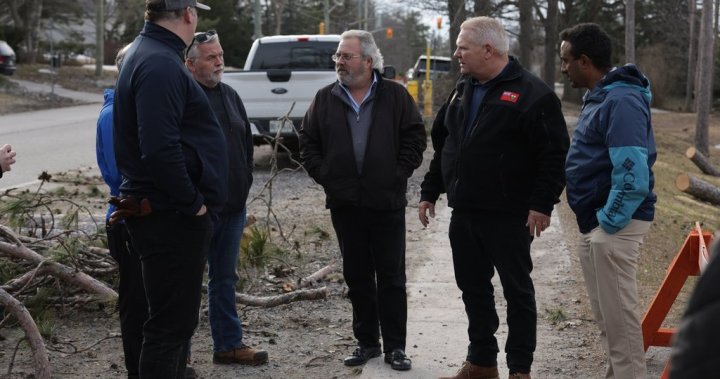As the first devastating ice storm of the winter season recedes across Eastern Ontario, Premier Doug Ford announced a significant recovery package today aimed at helping affected municipalities and small businesses rebuild. Having walked through the hardest-hit areas myself last week, I witnessed firsthand the scale of destruction rarely seen in recent memory.
“The damage I’ve seen in communities across Eastern Ontario is heartbreaking,” Ford said during his announcement in Ottawa this morning. “That’s why our government is stepping up with critical funding to help people get back on their feet.”
The provincial government will provide $5 million in immediate disaster recovery assistance, with municipalities eligible to apply starting tomorrow. Small businesses can access up to $20,000 in individual grants for repairs and replacement of essential equipment.
Walking down Wellington Street in downtown Ottawa yesterday, I spoke with Marina Kowalski, whose family-owned bakery lost nearly a week of business and thousands in spoiled inventory when power lines collapsed under the weight of ice.
“We’ve been here for 22 years and never seen anything like this,” Kowalski told me, gesturing toward the newly repaired awning. “The assistance will help, but it doesn’t make up for everything we lost.”
The funding comes after local mayors and business associations lobbied Queen’s Park for urgent assistance. According to provincial estimates, more than 300,000 homes and businesses lost power during the peak of the storm, with some rural areas remaining without electricity for nearly five days.
The Ontario Chamber of Commerce praised the announcement but questioned whether the funding will be sufficient. Their preliminary damage assessment estimates losses exceeding $27 million across the affected region.
“This is a good first step,” said Chamber President Rochelle Fernandes in a statement. “But many smaller communities and businesses will require additional support to fully recover.”
During my tour of Kemptville, I observed hydro crews still working to restore power to outlying areas. Local Councillor James Harrington showed me a century-old maple that had crashed through the roof of the community center.
“The building inspector says the structural damage is extensive,” Harrington explained. “We’re looking at potentially $200,000 in repairs, and our insurance won’t cover all of it.”
The provincial funding includes a streamlined application process that promises to deliver initial payments within 10 days of approval – a marked improvement from previous disaster relief programs that often left communities waiting months for assistance.
Opposition critics at Queen’s Park have generally supported the funding but questioned why the province wasn’t better prepared. NDP Municipal Affairs critic Jeff Burch pointed to climate change as a factor requiring more proactive planning.
“We’re seeing these extreme weather events with increasing regularity,” Burch noted during question period yesterday. “When will the government invest in infrastructure upgrades that prevent this kind of widespread damage in the first place?”
According to Environment Canada meteorologist Samantha Chen, this ice storm brought accumulations of up to 30mm in some areas – the worst seen in Eastern Ontario since the infamous 1998 storm that paralyzed much of Quebec and Eastern Ontario.
“Climate models suggest these events are becoming more frequent and more severe,” Chen explained when I called her for context. “Infrastructure designed for weather patterns of the past century may not be adequate for what we’re experiencing now.”
The funding announcement also includes $2 million specifically earmarked for tree removal and replanting efforts. Many communities lost significant urban canopy, which will take decades to restore.
For small business owners like Kowalski, the immediate concern is survival. “Every day closed is money we can’t get back,” she said, as customers finally returned to her bakery. “The grants will help with repairs, but not with lost business.”
Municipal leaders I spoke with expressed cautious optimism about the funding, though many noted the application process for previous disaster assistance programs was often cumbersome.
“We need the money flowing quickly,” said Carleton Place Mayor Doug Black. “Our public works budget for the entire year was depleted in four days of emergency response.”
Ford’s announcement included a promise to review the province’s emergency response protocols, acknowledging that climate adaptation must become a greater priority. Whether this translates to meaningful infrastructure investments remains to be seen.
As Eastern Ontario communities continue cleanup efforts, the provincial assistance provides welcome relief. But for those still cutting up fallen trees and repairing damaged homes, the recovery journey has only just begun. The deeper question of how Ontario prepares for an increasingly volatile climate future remains largely unanswered.






